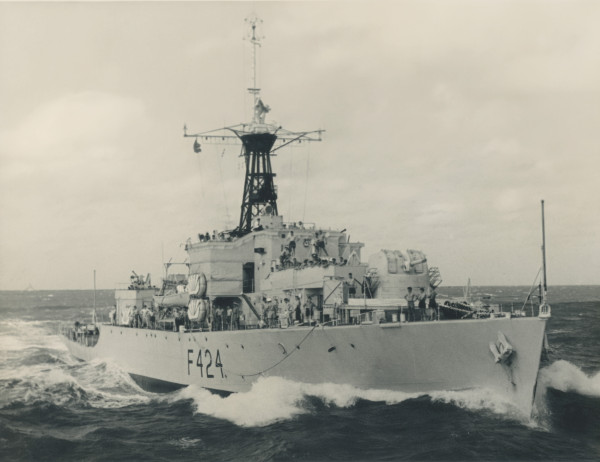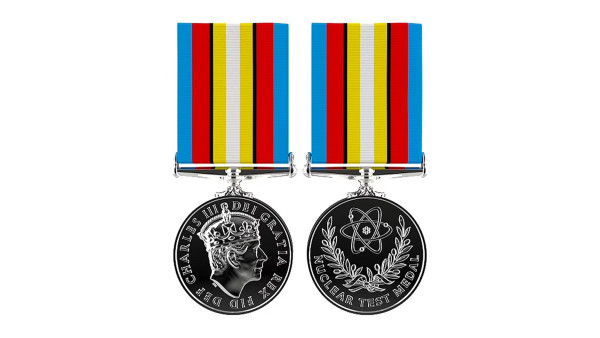UK government awarding medals to British Nuclear Test Veterans
UK government awarding medals to British Nuclear Test Veterans
In November 2022, the Government of the United Kingdom announced it would be awarding medals to all Commonwealth Armed Forces — or next of kin — involved in the United Kingdom’s Nuclear Test Programme between 1952 and 1967.
This medal is an additional entitlement to the New Zealand Government’s Special Service Medal (Nuclear Testing) that has been awarded for the same service. Most of the 600 New Zealanders who would be eligible for this British medal will be naval staff serving on HMNZS Pukaki and Rotoiti on specific dates between 15 May 1957 and 23 Sep 1958.

AAO 0023, HMNZS Pukaki. Provided by the National Museum of the Royal New Zealand Navy.
Service on the frigates that went to Mururoa during French nuclear testing is not covered by this award.
Eligibility
Full eligibility to receive a British Nuclear Test Medal can be seen on the UK government website:
Gov.uk webpage about the medal(external link)
The Montebello Islands, Christmas Island, Malden Island and Maralinga and Emu Field, South Australia, were where the British OP GRAPPLE nuclear tests were carried out. For most New Zealand veterans, they will have served in the Malden Island or Christmas Island test series, with only a small number of New Zealand observers present at Maralinga.
Veterans, civilian staff and next of kin can apply for a medal free of charge and it will also be awarded posthumously.
Apply for the medal
Applications for the medal can be submitted by completing the British Ministry of Defence medal form.
Application form for medals through the UK Ministry of Defence(external link)
The British Nuclear Test Medal is now being issued to veterans, starting with the oldest, with deliveries to New Zealand and Australian-based veterans already being received.
Design
The medal’s design features an atom surrounded by olive branches, with the words ‘Nuclear Test Medal’, and bears an image of His Majesty King Charles III on the reverse.
The medal’s ribbon colours are white, yellow, black and red, including a lighter blue for the sky and ocean to represent the Pacific — where the tests were conducted.

